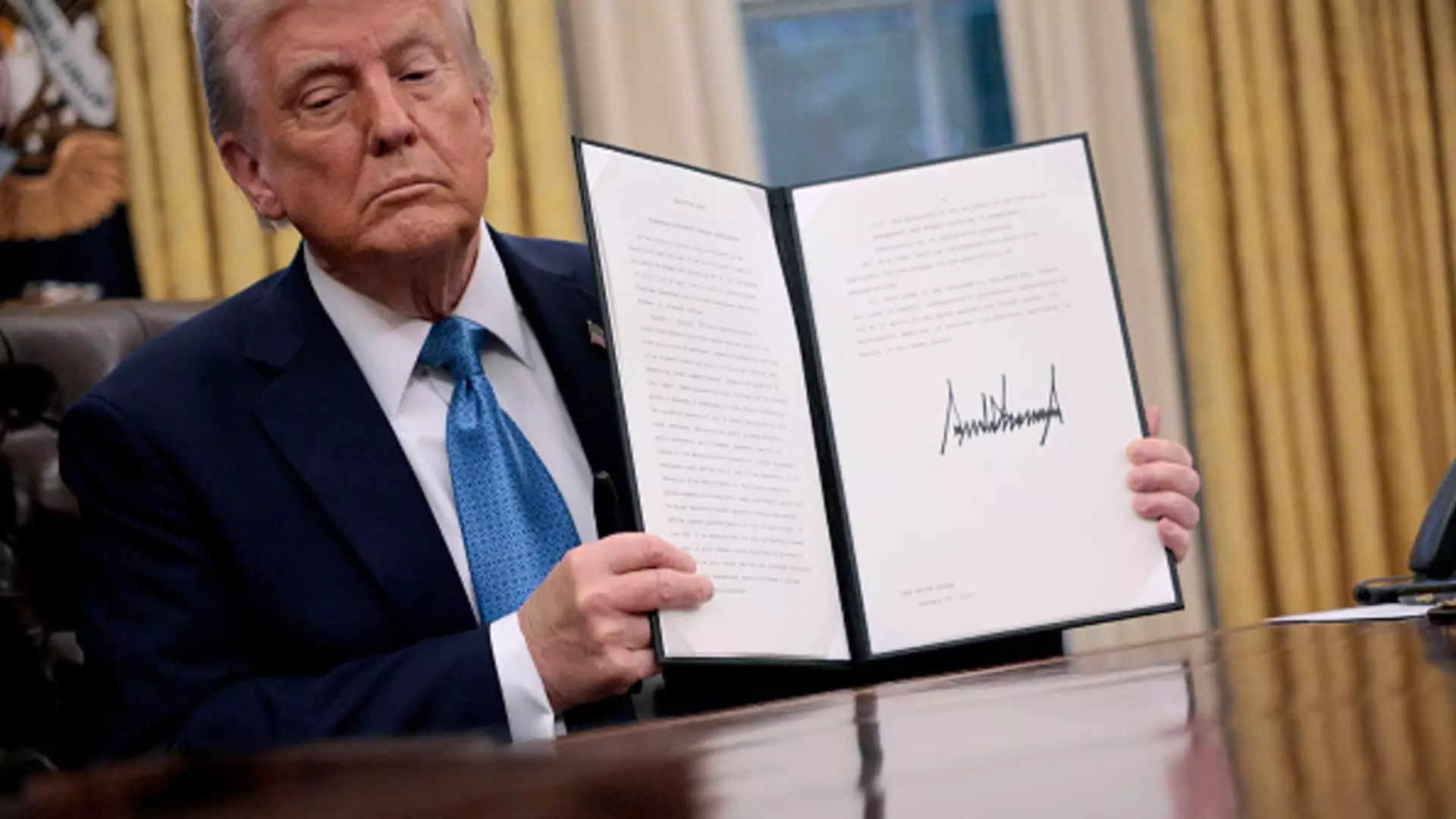In an era marked by increasing global interdependence, U.S. President Donald Trump’s aggressive stance on tariffs has sparked considerable concern within the financial markets. His recent decision to impose substantial tariffs—25% on goods imported from Mexico and Canada and 10% on imports from China—has ignited fears of a full-blown trade war. This unilateral decision not only affects international relations but poses significant risks to various sectors of the U.S. economy as businesses grapple with the potential repercussions of elevated costs and fractured supply chains.
The immediate reaction of the stock market to President Trump’s announcement was one of turbulence, particularly affecting industries reliant on global supply chains. Analysts from renowned financial institutions such as Goldman Sachs have projected that this latest round of tariffs could precipitate a 5% drop in U.S. stock prices, driven primarily by anticipated declines in corporate earnings. The ripple effects could be seismic, altering investor sentiment and business strategies across the board. The uncertainty generated by such policy moves can lead to reduced spending and investment by businesses hesitant to expand in an unpredictable environment.
The automotive sector is among those most vulnerable to the fallout from these tariffs. Major U.S. automakers—General Motors, Ford, and Stellantis—may face considerable challenges as they rely heavily on cross-border supply networks for various components and finished vehicles. The imposition of new tariffs could force these companies to rethink production strategies, potentially shifting operations back to the United States, which may not only disrupt existing supply chains but also elevate manufacturing costs.
Furthermore, the beverage industry has faced immediate backlash, with companies like Constellation Brands leading the sell-off of alcohol stocks. As Canadian authorities respond to tariff increases by threatening to remove American made products from their liquor stores, the impact of such trade barriers becomes painfully evident. This adds another layer of complexity for companies that depend on imports for their product offerings.
The imposition of tariffs doesn’t just create localized effects; it can lead to broader economic ramifications that reach consumers in everyday retail scenarios. Discount retailers such as Five Below and Dollar General, which rely heavily on imports from China for their merchandise, may find themselves at a competitive disadvantage due to higher prices. This, in turn, could squeeze consumers who are already facing rising costs for staple goods.
In the realm of fashion, sportswear giants such as Nike and Lululemon may find their operations in jeopardy. Given their extensive use of Chinese goods in fabrics and other materials, the tariffs could not only increase expenses but also sour customer attitudes towards brands linked with the trade tensions. As these companies attempt to navigate rising costs, they risk alienating their demographic in an increasingly socially conscious marketplace.
The ripple effects extend into the transportation sector, with companies like Union Pacific and Norfolk Southern poised to feel the impact of disrupted freight flows. Higher tariffs can lead to slower logistics and increased operational costs, ultimately undermining revenue streams that are vital to sustaining business profitability. Delays and complications in transporting goods can contribute to supply shortages, resulting in a gut punch to companies that rely on consistent inventory flow.
Changing Retail Dynamics
Additionally, Trump’s tariff policies threaten to dismantle trade exemptions that previously allowed budget online retailers, like Temu and Alibaba’s AliExpress, to thrive. The “de minimis” trade provision has fostered the proliferation of inexpensive goods entering the U.S. market, but the elimination of this loophole could lead to increased prices for consumers and less competition among sellers. Consequently, this might change the landscape of e-commerce, pushing consumers to reconsider where and how they shop.
The implications of President Trump’s tariffs are wide-ranging and multifaceted. As they reverberate across various sectors, businesses must adopt a proactive stance to anticipate and adapt to this shifting economic landscape. Whether it is through rethinking supply chains, adjusting pricing strategies, or investing in new markets, firms must navigate these turbulent waters wisely. The path forward will require not only resilience but also strong strategic foresight to emerge from these challenges intact. The financial markets and industries alike will be watching closely, as the true ramifications of these trade policies unfold in real time.

